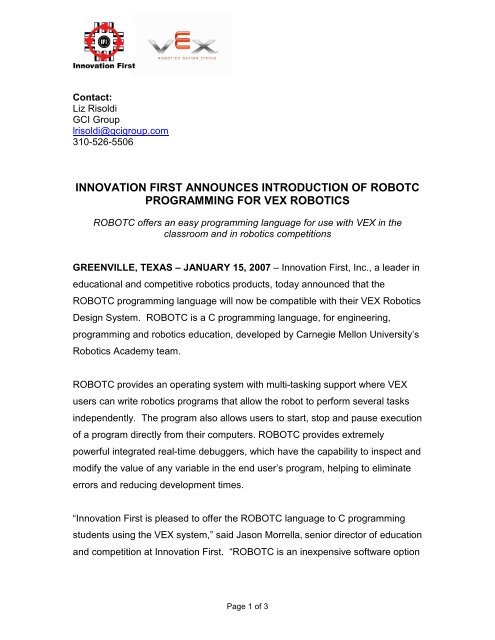

In a multi-source inter-robot transfer learning setup, we show that this similarity metric allows us to predict relative transfer performance and thus informatively select experiences from a source robot before knowledge transfer. To learn more about ROBOTC 4.
LEARNING ROBOTC HOW TO
Before reading this instructable, you should have a basic understanding of programming, and how to use the RobotC software. It does not use drag and drop blocks like NXT-G or LabView - instead, it uses text to command (and conquer) the robot. RobotC is a text-based programming language. ROBOTC 4.0 is legal for use in both the VEX Robotics Competition and VEX IQ Challenge. RobotC for VEX Cortex: In this instructable, you will learn the basics of programming a VEX Cortex, in the RobotC software. RobotC is a programming language used to program robots participating in FTC competitions.
LEARNING ROBOTC SOFTWARE
In this work, inspired by a system gap metric from robust control theory, the nu-gap, we present a data-efficient algorithm for estimating the similarity between pairs of robot systems. ROBOTC 4.0 can also be used to program VEX IQ robots so younger students can learn to code on the same software that they will use when they progress to VEX EDR. For practical applications, inappropriate knowledge transfer can result in negative transfer or unsafe behaviour.

A commonly made but infrequently examined assumption is that incorporating experience from a source task or robot will be beneficial. In the robotics literature, different knowledge transfer approaches have been proposed to leverage the experience from a source task or robot-real or virtual-to accelerate the learning process on a new task or robot. The bytes in RobotC I 2 C are full, which means they are from 0 to 255. This explanation was provided to me from Helmut Wunder.

RobotC and Lego NXT use the 8 bits coding, and EV3 and Arduino use the genuine 7-bit address coding. of the IEEE International Conference on Robotics and Automation (ICRA), 2020, p. As you may observe, the address is now shifted from bit 0-6 to 1-7. Experience selection using dynamics similarity for efficient multi-source transfer learning between robotsM.


 0 kommentar(er)
0 kommentar(er)
